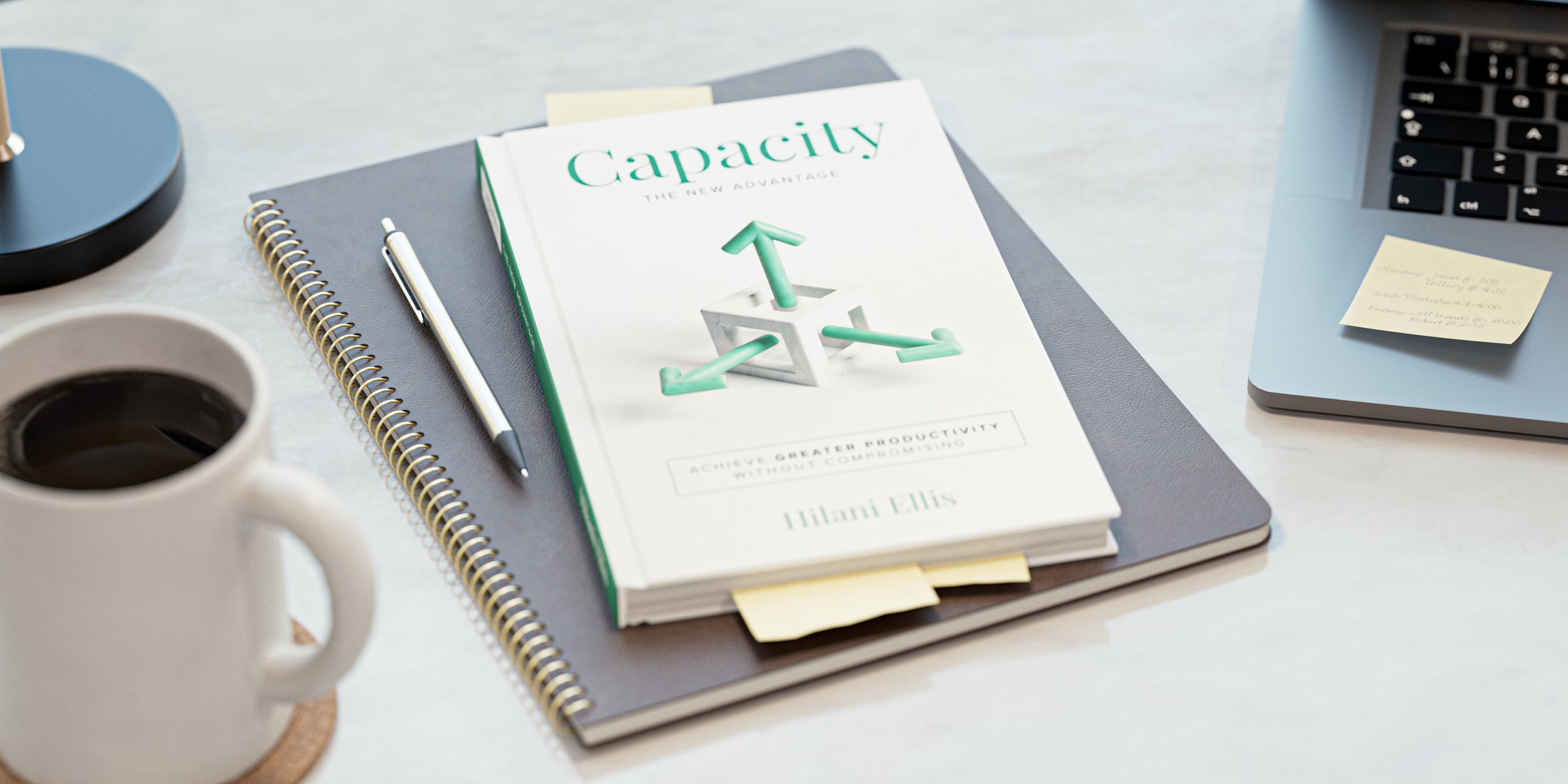Behind the Scenes: What Writing and Self-Publishing Taught Me
Five behind-the-scenes lessons that challenged my own capacity—and shaped the book I never planned to write.
I didn’t set out to write a book.
Initially, I just wanted to organize my vast library of knowledge into searchable categories, a “Hilani Library” I could easily reference and share with my assistant. Getting it out of my head and into a usable format felt like a worthwhile investment of my own capacity.
I started with a list of topics that were easy to understand, this became my table of contents. From there, I began writing summaries for each category and brainstormed stories I’d use to illustrate them. As the structure took shape, I paused and thought: If I’m putting in this much effort…why not just make it a book?
As someone who thrives on the helper’s high, the idea of creating something useful for others energized me. I’ve written dozens of articles under my firm, Exceptional Admins, since launching in 2016, so technically, I’m an author. But a book? One that could live on a shelf? That felt different.
The idea lingered for a couple of weeks—until I opened one of those daily emails from Harvard Business Review. It featured a newly released book compiling their best articles on Leadership. Suddenly, it clicked: I’m already organizing valuable, original insights on leadership and productivity. Why not put it in a format that gives it the longevity it deserves?
That moment shifted everything. What started as a personal archive turned into a published project. And along the way, I discovered a few unexpected lessons that pushed me, challenged me, and confirmed just how real the concept of capacity truly is.
Along the way, I discovered five lessons, each one reinforcing the very principles I teach inside Capacity: The New Advantage.
1. You’ll hear your own voice more than you ever wanted to.
I expected to write. I didn’t expect to listen to myself, for eight months straight. Reading, rereading, comparing edits, catching errors...I started tuning out my own tone like it was elevator music. There were days I’d ask my assistant to take the first pass on edits just so I didn’t have to hear myself again. She helped me keep perspective, and I’m forever grateful.
This unexpected part of the process reinforced the value of holding yourself to a high standard. While it was a strain on my capacity, the return on the other side will be more than worth it.
2. Even for seasoned leaders, some risks feel personal.
As a founder of two companies and a strategic partner to top-tier CEOs, I’m no stranger to risk. But writing and publishing a book wasn’t a business decision, it was a personal one. There was no strategy deck, no market test, just me, my ideas, and the internal dialogue: Is this really the right next move?
While writing the chapter on risk-reward, I realized this book was my own test. The reward? If even one person is helped by these insights, the effort was worth it.
Would you write the book that’s been on your mind, especially when the return is unknown? You’ll be able to explore your own Risk Capacity in Chapter 4.
3. You’re never actually done reading your own book.
Every time I thought it was finished, another detail would pop up.
One Thursday night, I read the manuscript from 7 to 9 p.m., not for content, but because I noticed my quotation marks weren’t consistent.
A professional book doesn’t just read well, it looks intentional. Every quote mark, indent, and comma plays a role in shaping the reader’s experience. This process tested my capacity for precision in ways I hadn’t planned.
4. The design process takes vision, and the willingness to recalibrate.
I knew I wanted a hardcover. No book jacket. A simple box on the front to represent fixed capacity ready to be expanded. I started in Canva, then hired a recommended designer, but the results didn’t align. I kept searching until a friend who’s published two books made an introduction. While I lost money on the first collaboration, I’m glad I didn’t settle. The new designer truly understood the vision and provided the end product that is displayed on the cover today. It’s strategic and intentional as the message within.
Creative work, like leadership, comes with hidden trade-offs. Every revision, every delay, every decision has a capacity cost, something I explain in depth in Chapter 6. It’s not just about doing the work; it’s about managing where, how, and why your capacity is spent. The extra capacity cost spent on finding the right illustrator was worth it.
5. The title wasn’t just a decision, it was a declaration.
I’ve never believed in time management. Time is fixed, out of our control. But capacity? Capacity is flexible, expandable, and deeply personal.
Looking back on my work, I realized: my greatest impact has always come from helping leaders expand their capacity, enabling them to scale, lead stronger, and build a meaningful legacy. It’s where the label Capacity Architect came from, and it’s why this book had to introduce a new focus for productivity and leadership.
Capacity: The New Advantage challenges the outdated, time-bound approach we’ve inherited and offers something more relevant, more energizing, and far more effective. It’s not about doing more with less, it’s about working in a way that’s built for this era, not the last one.
As someone who operates with a high level of capacity each day, I can tell you, it’s not limitless. Writing this book challenged my capacity in unexpected ways creatively, mentally, and emotionally. But what came out of it is something I deeply believe in: a new, more sustainable way to lead and work. If you’ve ever felt like your current approach might be holding you back, Capacity: The New Advantage offers the mindset and methods needed to move forward sustainably.
✨ Ready to rethink what’s possible? Start here.

